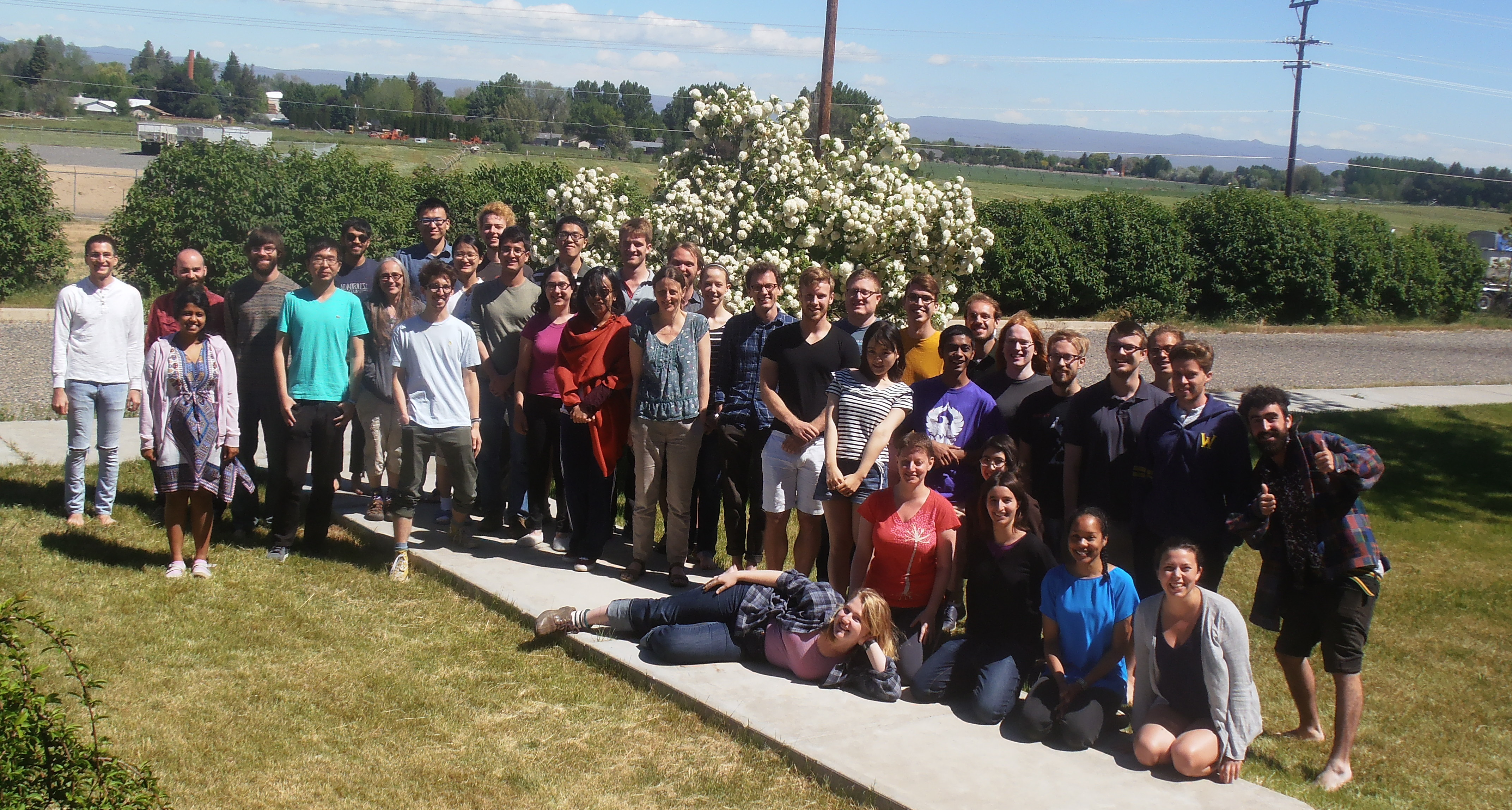Talbot 2017: Obstruction theory for structured ring spectra
Mentored by Maria Basterra and Sarah Whitehouse
May 21-27, 2017
Gooding, ID

Alternative photo
Topic: The 2017 Talbot workshop, aimed toward graduate students and other young researchers, was about obstruction theory for structured ring spectra.
Stable homotopy theory is very well established as a successful context for converting geometric information into tractable algebraic data. The development of "good" categories of spectra during the 1990s has allowed for the wholesale importation of techniques from algebra into the subject. Many of the research efforts of the last 20 years have been dedicated to the development of this new homotopical algebra (also known as brave new algebra).
The generalization of ring invariants and associated concepts has been very successful. For example, Galois theory has been generalized from the classical algebraic setting to structured ring spectra. Similar new directions have been introduced in other fields, most notably with Lurie's development of "derived algebraic geometry".
In contrast to ordinary rings, multiplications of ring spectra come in a hierarchy of "flavors": a homotopy associative multiplication may satisfy various higher coherence conditions ($A_3$, $A_4$, ..., $A_\infty$) and introducing homotopy commutativity leads to further higher coherence conditions ($E_2$, $E_3$, ..., $E_\infty$). For the purposes of applying algebraic techniques, it is very important to understand to what extent a given ring spectrum satisfies these higher coherences. The language of operads is crucial to formulating and working with these structures.
This workshop investigated three different approaches to the question of to what extent the multiplication of a homotopy commutative and associative ring spectrum possesses this higher structure. These approaches lead to the study of gamma homology and several generalizations of André-Quillen homology. Properties of the constructions, relationships between the approaches, calculations and applications were covered.A description of the talks, with extensive references, can be found here.
Mentors: The 2017 Talbot workshop was mentored by Prof. Maria Basterra of the University of New Hampshire and Prof. Sarah Whitehouse of the University of Sheffield.
Format: The workshop discussions had an expository character and most of the talks were given by participants. The afternoon schedule was kept clear for informal discussions and collaborations. The workshop took place in a communal setting, with participants sharing living space and cooking and cleaning responsibilities.
Timeline: The 2017 Talbot workshop is now over. Check back in late fall 2017 for more information about the 2018 workshop.
Funding: We cover all local expenses including lodging and food. We also have limited funding available for participants' travel costs.
Who should apply: Talbot is meant to encourage collaboration among young researchers, particularly graduate students. To this end, the workshop aims to gather participants with a diverse array of knowledge and interests, so applicants need not be an expert in the field. In particular, students at all levels of graduate education are encouraged to apply. Our decisions are based not on applicants' credentials but on our assessment of how much they would benefit from the workshop. As we are committed to promoting diversity in mathematics, we also especially encourage women and minorities to apply.
Inclusiveness statement: In accordance with the Statement of Inclusiveness, this workshop will be open to everybody, regardless of race, sex, religion, national origin, sexual orientation, gender identity, disability, age, pregnancy, immigration status, or any other aspect of identity. We are committed to ensuring that the Talbot Workshop is a supportive, inclusive, and safe environment for all participants, and that all participants are treated with dignity and respect.
Contact Information: Please email the organizers at talbotworkshop(at)gmail.com if you have any questions.